


Please join us in welcoming another exciting semester of Design Field Notes speakers. As part of our ongoing course DES INV 95, this speaker series invites a dynamic group of designers, artists, and academics in design-related fields to share their work and practice with our students and public.
Each talk is free and open to all students and members of the public via Zoom. A Zoom account is required for login and access to this series. You can join each of the talks during its scheduled time using this link!
All talks will take place on Zoom Wednesdays, 10 – 11 a.m. PT. Follow @JacobsDesignCal on Instagram for regular updates on the series.
January 29
Helene Steiner, CEO, OpenCell
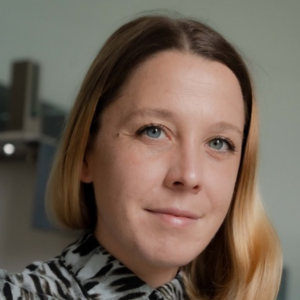
Helene Steiner is the Director and co-founder of OpenCell, a company dedicated to making life science more accessible and accelerating innovation from concept to reality. Helene’s contributions to science have been recognized by the National Academy of Sciences through a Frontier of Science Kavli Fellowship. She also serves as a Steering Committee member at the SynBio IRC, University of Cambridge.
Before her role at OpenCell, Helene worked in various research institutes such as Microsoft Research and MIT Media Lab, where she focused on computational biology and biological interfaces. Her academic background includes degrees from the Bauhaus University, Royal College of Art, and Imperial College London.
In this seminar, Helene Steiner will explore the intersection of biology and digital systems, highlighting the potential of bio-digital interfaces to address challenges in healthcare, material science, and environmental sustainability. As biotechnology becomes more accessible, fields like engineering and design are playing an increasing role in driving biotechnological innovation.
She will share her work on creating affordable and connected lab infrastructures, plant-human interfaces for agriculture using plant signalling, smart bacteria-programmed clothing, and mobile high-throughput labs for low-cost diagnostics. These projects illustrate how hybrid bio-digital systems can bring biotechnology applications into everyday life.
February 5
Viraj Joshi, Designer, Technologist, Futurist, Fjord (Accenture Song)
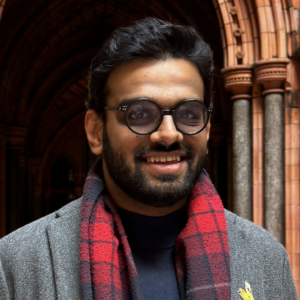
Viraj Joshi is a designer, technologist, and futurist. His practice investigates human-machine interaction, speculative design and fiction, and emerging technology.
He has received several international accolades including work shown at the Science Museum London, United Nations DPPA, London Design Festival, and Milan Design Week.
He has worked at Fjord (Accenture Song) for nearly 6 years between their London and Stockholm Studios. He is also a visiting lecturer at the Royal College of Art.
He is the cartoonist behind Eliza – The Ghost in Every Machine, tech-critique graphic stories.
He is based in London.
February 12
John Bertolaso, Co-founder & CTO, Materra

John Bertolaso is the co-founder and CTO of Materra and oversees product and technology development activities. He has a background in industrial design and mechanical engineering (MEng, MSc, MA) from Imperial College and the Royal College of Art. He previously worked on experimental arts and design projects in Saudi Arabia, China and the US, and led engineering R&D at a female healthcare startup. Along with his co-founders, John was part of the Forbes 30u30 Europe list for Manufacturing and Industry, in 2021.
Materra is an AgTech company decarbonising cotton production through regenerative agriculture. We design and implement nature-based project in smallholder contexts, and with our data & AI platform Co:Farm, we measure, manage and reduce on-farm emissions while supporting farmers day-to-day in their regenerative transition. Our fully traceable ultra-low impact material allows the fashion industry to build more compliant and resilient supply chains while meeting its ambitious 2030 climate goals.
February 19
Corinne, Artist & STEAM Education Specialist, Okada Design/Nest Makerspace
 Corinne Okada Takara is a Hawai’i based artist/STEAM educator. She works with museums, libraries and after school programs to create workshops that elevate and empower community voices in conversations centered on civic spaces, identity, and technology. She conducts workshops on sustainability design and biomaterial design that celebrate existing cultural and community knowledge. She has conducted these workshops in Georgia, Hawaii, Los Angeles, in the San Francisco area, and has mentored four teen Biodesign Challenge teams. Takara is a 2020 Global Community Bio Fellow, the 2019 Biodesign Challenge Outstanding Instructor, cofounder of BioJam Camp, cofounder of the Art & Design Thinking Camp of San José, and past Program Director of Xinampa in Salinas, California. She develops programming out of her garage and garden makerspace.
Corinne Okada Takara is a Hawai’i based artist/STEAM educator. She works with museums, libraries and after school programs to create workshops that elevate and empower community voices in conversations centered on civic spaces, identity, and technology. She conducts workshops on sustainability design and biomaterial design that celebrate existing cultural and community knowledge. She has conducted these workshops in Georgia, Hawaii, Los Angeles, in the San Francisco area, and has mentored four teen Biodesign Challenge teams. Takara is a 2020 Global Community Bio Fellow, the 2019 Biodesign Challenge Outstanding Instructor, cofounder of BioJam Camp, cofounder of the Art & Design Thinking Camp of San José, and past Program Director of Xinampa in Salinas, California. She develops programming out of her garage and garden makerspace.
February 26
Baillie Mishler, Chief Design Officer, PROWL Studio

PROWL is an industrial design studio helping brands create a regenerative future.
We take a research-based, materials-centered, and collaborative approach in order to craft inspiring outcomes at scale that employ materials, processes, and technology in measurable and more responsible ways.
To realize our regenerative design vision, we involve experts at points beyond the traditional scope, such as upstream with material scientists and downstream to recycling and composting facilities.
Because of our concentrated focus to create a regenerative future with our clients, partners, and collaborators, our outcomes can take many forms — products, storytelling strategies, and research reports — across numerous industries.
Baillie Mishler has worked as a professional industrial designer for over a decade in industry-leading companies such as Steelcase, honing her skills in strategic product development and color-material-finish and growing her passion for sustainability and environmental impact.
March 5
Reto Togni, PhD, ETH Zürich
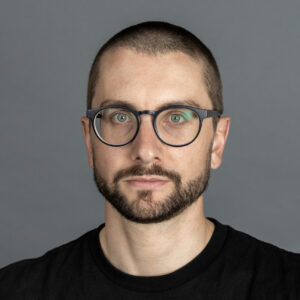
Everyday objects, no matter how mundane, shape our identities, actions, and how others perceive us. By understanding these mechanisms, I develop technologies and products that enhance well-being and promote inclusivity – blending scientific rigor with creative exploration and precise execution.
I was trained in Industrial Design, graduated from the Royal College of Art and Imperial College London and earned a PhD in Movement Science from ETH Zürich. My doctoral research introduced the concept of “steering-by-leaning” in manual wheelchairs. Through the spinoff company Versive, I am dedicated to translating the results into tangible products that improve mobility and health of users.
March 19
Virj Kan, Founder & CEO, Primitives Biodesign
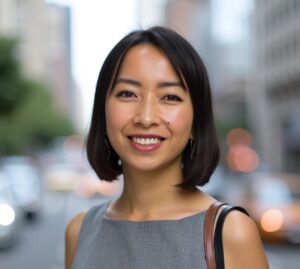
Virj Kan is a designer, engineer, artist, and founder of Primitives Biodesign, a b-corp company that produces advanced materials to drive nature and ecosystem restoration. Working at the intersection of business, technology, and art, she engineers innovative materials that transform how we interact and relate to the environment. Her research in the field of human-computer interaction, biodesign, and sustainable chemistry has earned recognition with awards like the SXSW Interactive Innovation award, ACM CHI Best Paper award, Audi Greentech Award, ACM CHI Golden Mouse award, Information is Beautiful award, and ISC3 Sustainable Chemistry Audience award. She has held roles at leading innovation labs, including NASA Jet Propulsion Laboratory, Samsung Design Innovation Center, and MIT Media Lab. She holds a Master of Science from MIT and a Bachelor of Science from Art Center College of Design.
April 2
Eleanor Mayes, Designer, Media and Accessible Design Lab, LightHouse for the Blind and Visually Impaired
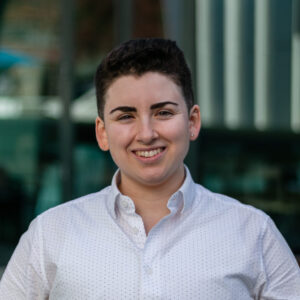
Eleanor Mayes is a designer at the Media & Accessible Design Lab (MADLab) at the San Francisco LightHouse for the Blind and Visually Impaired. With a background in materials engineering and accessible design, she creates tactile media that furthers accessibility by augmenting the information landscape. Eleanor specializes in 2.5D design, transforming visual graphics into tangible formats, while working closely with blind individuals to develop bespoke designs that prioritize the broader blind community. Her work supports MADLab’s mission to improve access to information for blind and low-vision individuals through tactile graphics, maps, and other resources. Passionate about equity, Eleanor centers her design practice around disabled, BIPOC, and LGBTQ+ communities, advocating for collaborative, inclusive approaches in both design and engineering to promote a more just and accessible future.
April 16
Hugo Eccles, Founder Director, UNTLD MOTO
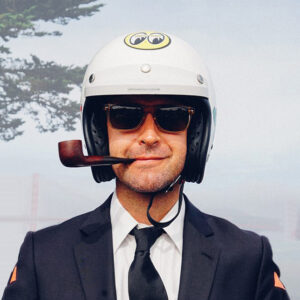
Hugo Eccles is Founder of UNTLD MOTO which delivers transformational strategy, design, and production for the automotive industry. Together with the world’s top brands UNTLD envisions a new way forward that helps transport brands into the future.
Trained at the Royal College of Art, Hugo worked for twenty years as industrial design director for international agencies IDEO, Landor, Omnicom, and others, working with clientele that included Nike, Ford, TAG Heuer, American Express, and Hewlett Packard. In 2014 he founded UNTLD MOTO in response to the nascent electric vehicle industry and the evolving transport landscape.
Alongside UNTLD MOTO, Hugo is also a design professor, design writer, and design curator. His work regularly garners awards and has been featured extensively online, in print, on television, in film and Hollywood movies.
April 23
Kaiwei Tang, CEO and co-founder, Light

Kaiwei Tang stands as a beacon of innovation and purpose-driven entrepreneurship. With a deep-rooted passion for reshaping technology’s role in our lives, Kaiwei embarked on a transformative journey that culminated in the creation of The Light Phone. This visionary endeavor reimagines mobile communication, reflecting his commitment to crafting technology that enriches our human experience.
As the CEO and Co-Founder of The Light Phone, Kaiwei’s impact extends beyond innovation—it encapsulates a philosophy that champions mindfulness, simplicity, and authentic connections. His journey from concept to creation showcases his resilience in navigating the dynamic landscape of hardware startups, inspiring budding entrepreneurs with his blend of creativity and strategic acumen.